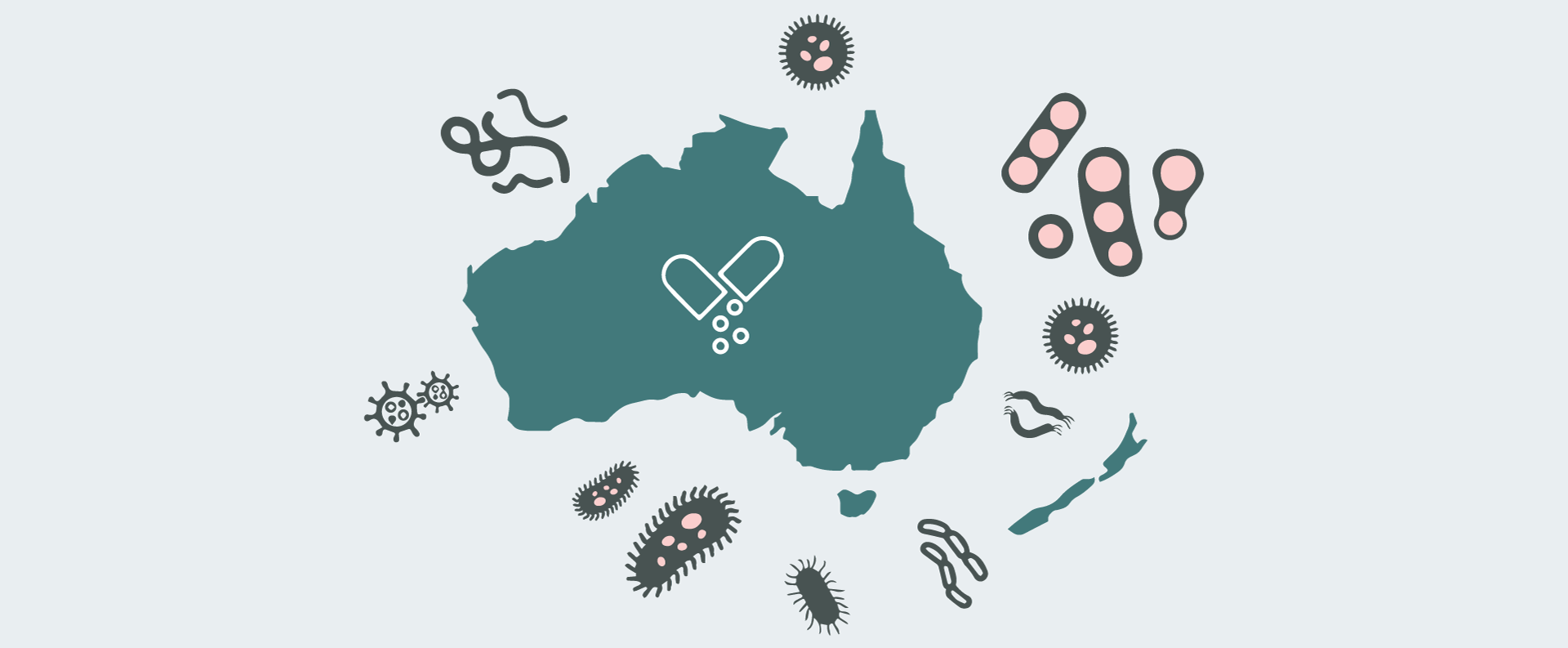With a lower burden than many other countries, an engaged research and stakeholder community, and several successful initiatives, Australia still needs to enhance its position to effectively mitigate the impact of antimicrobial resistance (AMR).
Australia’s strengths
Geographic advantage and biosecurity measures
Australia’s geographic isolation allows for stringent control over the movement of people, animals, and goods. This has enabled the country to implement and maintain strict biosecurity measures, reducing the risk of introducing and spreading resistant pathogens. These measures also contribute to a low burden of disease in livestock, reducing the need for antibiotic use.
Advanced technologies and capabilities
Australia has advanced technologies and expertise to support AMR surveillance, such as in-situ sensors and robotic processing technologies. Insights from technologies utilised during the COVID-19 outbreak, like wastewater monitoring and the AusTrakka genomics platform, could further enhance the fight against AMR. At the same time, Australia’s robust medtech sector is developing new technologies, including antimicrobial coatings for medical devices and nanotechnologies designed to kill microbes.
Australia’s capabilities and research expertise have led to the successful development of several Australian-designed AMR initiatives including Australian Antimicrobial Resistance Network (AAMRNet), the HOTspots Project, and Guidance AMS.
AAMRNet
AAMRNet was established by MTPConnect in 2020. It brings together stakeholders from industry, research, healthcare, and government to foster innovation and develop effective strategies against AMR. AAMRNet aims to establish an AMR-focused accelerator integrated with the global CARB-X network and create a pilot fund for novel antimicrobials. Additionally, it advocates for market incentives to make antibiotic development financially viable and sustainable.
CSIRO HOTspots project
Launched in 2019, the CSIRO HOTspots project is a digital surveillance and response program focussed on regional and remote areas. It collects and displays region-specific AMR data through an interactive platform, helping healthcare professionals choose effective antibiotics based on local resistance patterns. The project aims to integrate AMR data from animal and environmental sources, to provide a One Health approach.
Guidance AMS
Guidance AMS is a web-based antimicrobial decision-support program developed by clinicians at the Royal Melbourne Hospital. Originally launched in 2005 and redeveloped in 2022, Guidance AMS supports hospital antimicrobial-stewardship activities by aiding in clinical decision-making, monitoring prescriptions, and ensuring the appropriate use of antimicrobials. This tool helps hospitals meet accreditation standards and improves infection management, thereby reducing resistance rates and enhancing patient outcomes.
SAAFE CRC
Australia’s Cooperative Research Centre for Solving Antimicrobial Resistance in Agribusiness, Food and Environments (SAAFE CRC), is using a coordinated and cross-sectoral approach to tackle AMR. Working with partners across viticulture, aquaculture, horticulture, water, organic waste, stockfeed and animal industries, SAAFE CRC is investing more than $150M to develop, share and implement AMR solutions

Australia’s opportunities
Integrated One Health surveillance system
Despite initiatives like Guidance AMS, HOTspots project, and human surveillance systems like AURA, Australia does not have a comprehensive One Health surveillance system. Furthermore, surveillance and data remain fragmented for animal health, and scarce for the environment. A comprehensive and integrated system is critically needed across human, animal and environmental sectors, with standardised data collection and analysis to provide a holistic view of the challenge.
Australia’s overall investment in R&D is low compared with global standards. Given this constrained environment, an integrated One Health surveillance system would also allow research and resources to be directed to where they will have the greatest impact.
While the capability exists for such a system to be established, it requires support from industry, the research community and policy makers across every level of government. To date, despite an agreement among industry, research community and government that such a system needs to be established and the inclusion of such a system in Australia’s National AMR Strategy, progress has been slow.
Getting new technologies and therapies to market
Australia faces challenges in translating AMR innovations from research to market. Streamlined regulatory pathways and sustainable funding models are essential to develop, distribute, and make new technologies like point-of-care diagnostics, medical devices, and vaccines commercially attractive to investors.
Low public awareness and knowledge
Australia continues to prescribe antibiotics at a higher rate than many other countries, and public misunderstanding about appropriate use is widespread. Ongoing education for the public and healthcare professionals, including those in aged care, is essential to promote proper antibiotic use and reduce resistance risks.
Securing the future
Australia’s proactive approach, bolstered by its geographical and biosecurity measures, has positioned the country strongly in the fight against AMR. However, as this threat escalates, Australia must address gaps in surveillance, data coordination, and the commercialisation of AMR solutions. By implementing an integrated One Health surveillance system, enhancing education, and streamlining the path from research to market, Australia can further solidify its leadership in the global fight against AMR, safeguarding public health while advancing technological innovation.
Asaesja Young is an expert in translating complex scientific research into accessible information for the public, with a background in health and science communication, as well as significant experience in government and policy roles.

